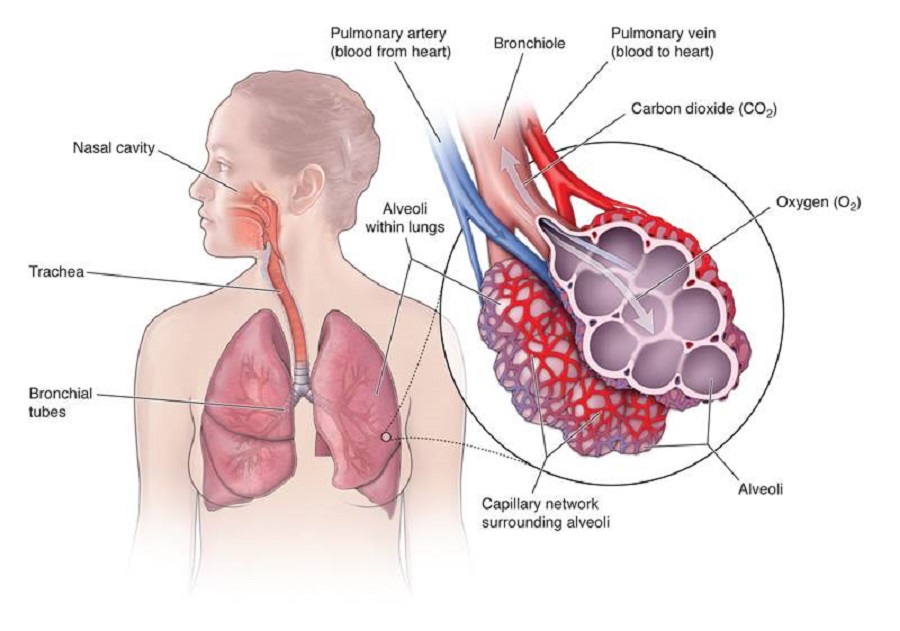 When you take a breath through your nose or mouth, the air is warmed and humidified, and then moved through your voice box and down the windpipe. From there, it travels down two bronchial tubes that enter the lungs. A thin flap of tissue, the epiglottis, blocks your windpipe when you swallow to prevent food and liquid from entering.
When you take a breath through your nose or mouth, the air is warmed and humidified, and then moved through your voice box and down the windpipe. From there, it travels down two bronchial tubes that enter the lungs. A thin flap of tissue, the epiglottis, blocks your windpipe when you swallow to prevent food and liquid from entering.
When you breathe out, air leaves the body through your airways.
Lungs
The lungs are located on either side of the breastbone in the chest cavity and are divided into five main sections (lobes). The lungs are responsible for removing carbon dioxide from the blood and adding oxygen to it. The heart and lungs work together to do this.
The lungs contain thousands of thin tubes that end in bunches of tiny air sacs (alveoli). Each one of these sacs is covered in blood vessels that connect to a system of veins and arteries that move blood through the body.
When you take a breath, the pulmonary (lung) artery and its branches bring blood containing lots of carbon dioxide and no oxygen into these vessels. Carbon dioxide leaves the blood and enters the air, and oxygen leaves the air and enters the blood.
Once the blood has plenty of oxygen and no carbon dioxide, it is returned to the heart and pumped to the rest of the body.
Muscles
Many muscles are required to help the lungs expand and tighten during breathing:
- The diaphragm: Located below the lungs, the diaphragm is the main muscle needed to breathe. It separates the chest and abdominal cavities and contracts to help inflate the lungs.
- Intercostal muscles: Located between the ribs, these muscles give the lungs room to breathe by expanding and contracting the chest cavity.
- Abdominal muscles: These muscles give the lungs room to breathe by compressing the organs in the abdominal cavity.
- Neck and upper chest muscles: These muscles help you breathe when lung disease or damage to other muscles makes breathing difficult.
 When you take a breath through your nose or mouth, the air is warmed and humidified, and then moved through your voice box and down the windpipe. From there, it travels down two bronchial tubes that enter the lungs. A thin flap of tissue, the epiglottis, blocks your windpipe when you swallow to prevent food and liquid from entering.
When you take a breath through your nose or mouth, the air is warmed and humidified, and then moved through your voice box and down the windpipe. From there, it travels down two bronchial tubes that enter the lungs. A thin flap of tissue, the epiglottis, blocks your windpipe when you swallow to prevent food and liquid from entering.